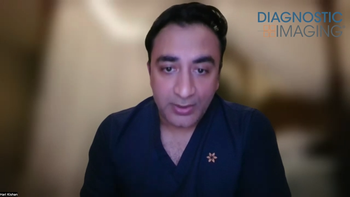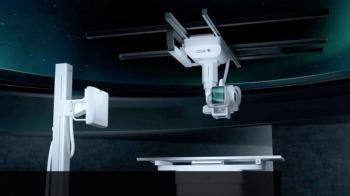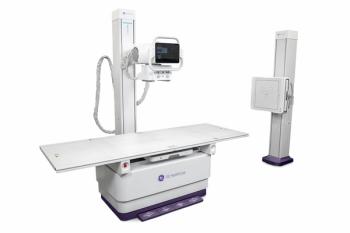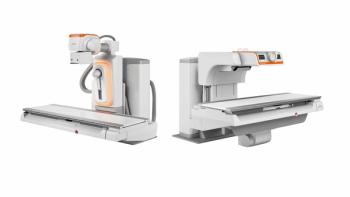
Poster shows computed radiography artifacts and their solutions
The artifacts observed in images derived from computed radiography come from a range of sources and user errors. A radiography team from Manipal, India, presented a digital exhibit at the RSNA meeting to illustrate sources of such artifacts and user solutions to overcome them.
The artifacts observed in images derived from computed radiography come from a range of sources and user errors. A radiography team from Manipal, India, presented a digital exhibit at the RSNA meeting to illustrate sources of such artifacts and user solutions to overcome them.
Image acquisition artifacts arise from a variety of conditions. Out of a number of cases presented, three case studies illustrate some of them.
In the first case, a Double J stent has been inserted. However, the postprocedure kidney urinary bladder radiograph showed two stents (Figure 1A). The twin, or double, effect occurred because two consecutive exposures were taken during one acquisition.
The key to eliminating this doubling artifact is proper exposure technique. The radiologist should always cross check with the surgeon about the placement of Double J stents when more than one stent is seen on the same side in a radiograph. Another way to spot artifacts in this radiograph is by noting the subtle doubling of adjacent structures, which may not be very evident, as in this example.
Once the radiograph was repeated, only a single stent was found (Figure 1B). “The remedy is proper exposure and proper use of the equipment, which are needed to prevent such misadventures,” said Ashita Barthur, MBBS, of the Kasturba Medical College and Hospital in Manipal.
The second case is a radiograph of the pelvis, which shows an increased density over the sacrum and right half of the pelvic bone (Figure 2A).
The problem here is an uncollimated primary beam that results in an increase in radiation exposure and an image that is not sharp. If the image collimation is not parallel to the imaging plate, proper borders will not be recognized, resulting in a suboptimal image.
The remedy involves proper collimation to match cassette size and body part to be imaged. In the retaken radiograph of the pelvis, details of the sacrum and pelvis are clear (Figure 2B).
The third case shows a radiograph of the chest and upper abdomen. Notice the artificial increase in density over the center of the abdomen at the bottom of the image (Figure 3).
“This [artifact] basically resembles a light bulb with the center of the light bulb at the center of the abdomen, which results in an artificial darkening of the periphery, which can be misdiagnosed as pneumoperitoneum, Barthur said.
This artifact results from using a high-kVp technique in obese patients and improper collimation. The solution to the light bulb artifact is reducing backscatter by lowering the kVp or by more precise collimation.
Newsletter
Stay at the forefront of radiology with the Diagnostic Imaging newsletter, delivering the latest news, clinical insights, and imaging advancements for today’s radiologists.




